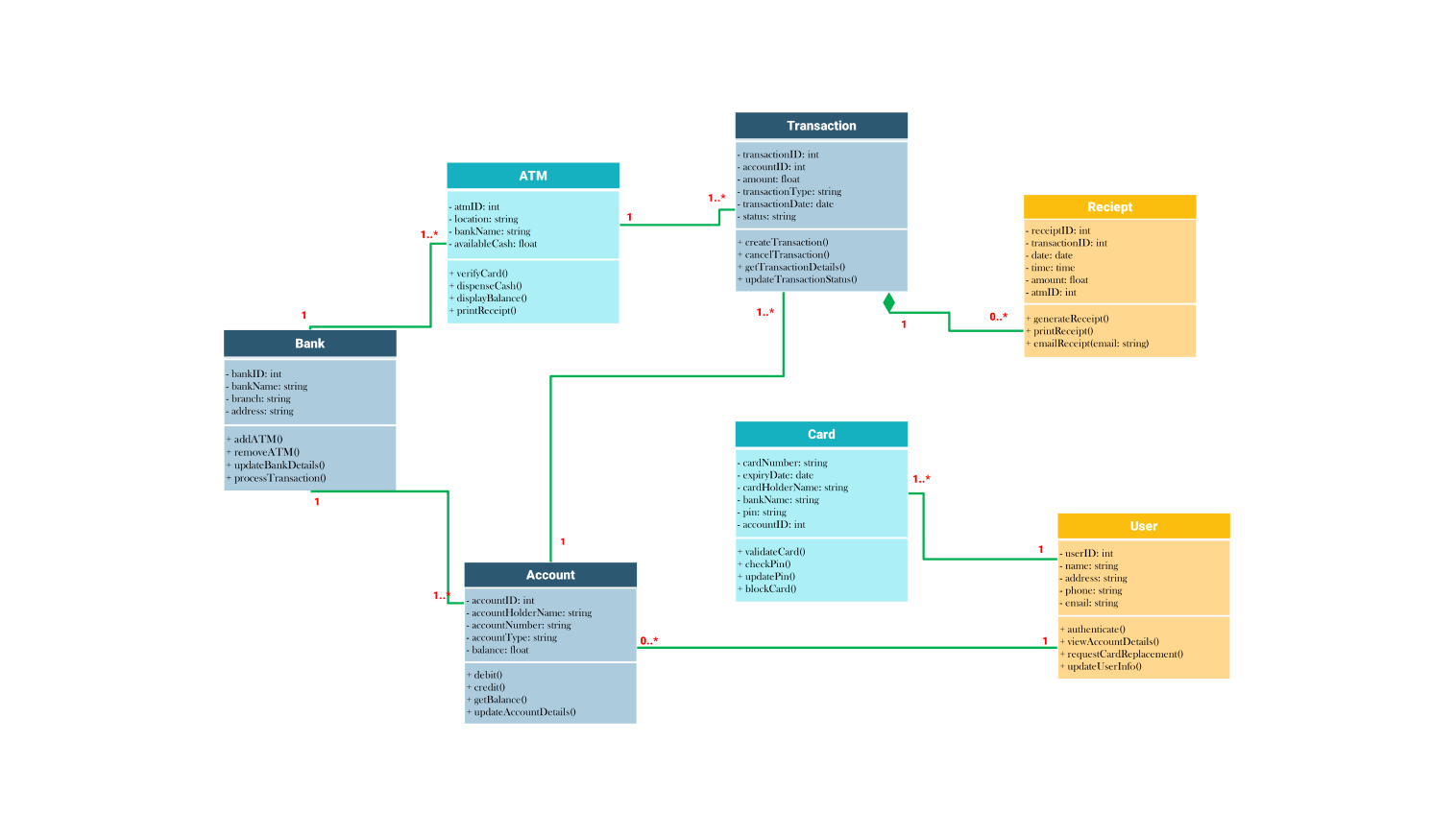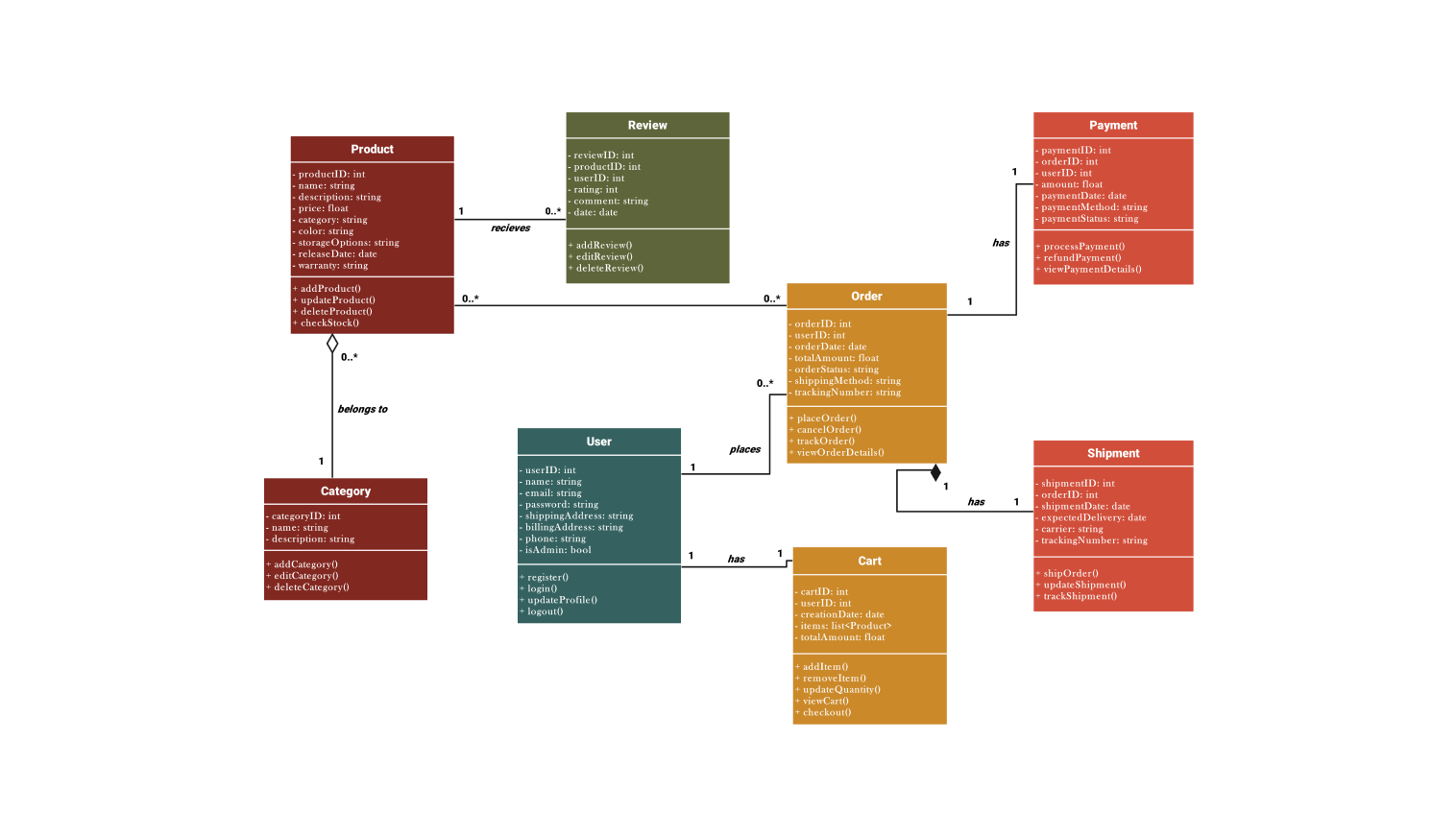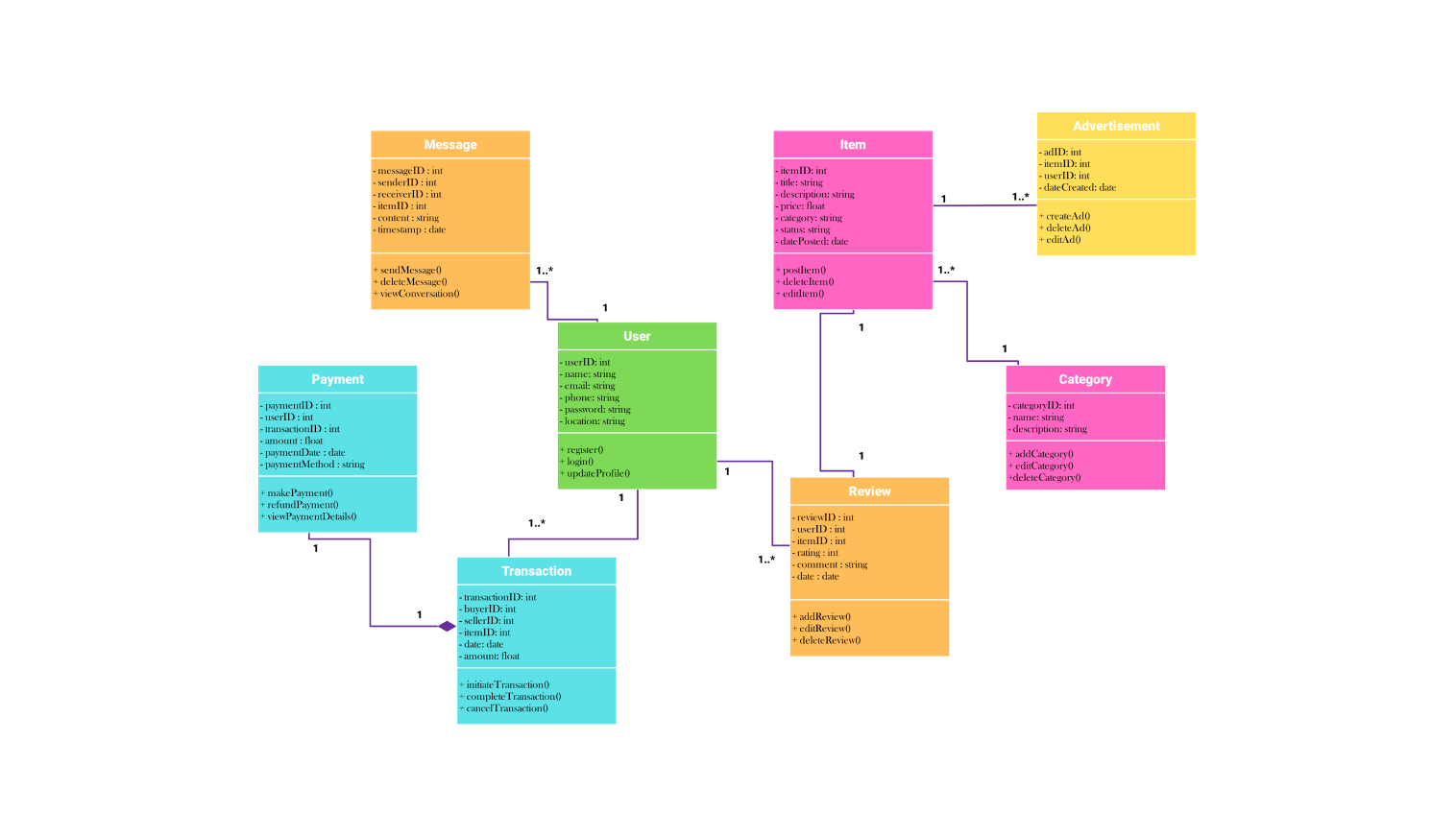- All templates
- Class diagrams templates
- Class diagram atm
About this class diagram for ATM system
The class diagram depicts in detail the structure of the ATM system. It also shows the relationships between its many classes. This graphic's heart is the user class, which represents bank clients. user ID, name, address, phone number, and email address are attributes for each user. These characteristics contribute to creating a complete profile of each consumer. It will enable the system for successful administration and communication.
A one-to-many cardinality is present between users and accounts. It shows that a user can have one or more accounts. Attributes such as account ID, account number, balance, and type define each account. This enables users to manage several financial accounts. Each account has unique information. This information is essential for managing balances and financial activities.
Banks and accounts are also related to each other. A bank creates a one-to-many connection by managing several accounts. Every account has a specific bank associated with it. Banks are important as they supervise and manage accounts. This connection emphasizes how the bank is accountable for upholding accounts. Also, the bank manages the finances of accounts.
ATM is a necessary component of conducting business. They are further related to banks. The figure shows the one-to-many link between banks and ATM. It shows that a single bank may run several atm. processing a range of transactions is the responsibility of each ATM. This highlights its vital role in the functioning of the ATM system.
An essential component of the ATM system is transactions. They are linked to particular accounts. There is a one-to-many connection between accounts and transactions. This keeps accurate financial records. It also documents financial activity. These activities include transfers, withdrawals, and deposits, transactions are necessary.
A transaction may or may not have a receipt. The receipt has transaction details. Receipt attributes are date, time, and amount. The one-to-one link between transactions and receipts provides a thorough record for users and banks.
The relationships between users, accounts, cards, banks, ATMs, transactions, and receipts are all well-modeled by the diagram. It shows how banks oversee ATMs and accounts. It tells how users interact with their cards and accounts. It explains how transactions are documented using receipts. This diagram helps to understand the flow of activities in ATM system.
How to use this template
Click Use this template to get started. You may alter the diagram by dragging and dropping shapes from the libraries.
Customize the diagram by entering your information and making changes to the text areas. Utilize the formatting tools on the platform to alter the way text, lines, and boxes look.
Click "Export" after selecting your favorite export format after the diagram is finished. Choose a file type, like .png, .pdf, or.eddx. Make sure you store the file for usage and reference in the future
Benefits of the class diagram
The diagram makes database design and administration a great deal easier. It helps by explaining the ATM system's relationships and structure. It shows how various components interact. It does this by providing a clear visual of the interactions between classes. These include users, accounts, cards, banks, ATMs, transactions, and receipts.
This clarity guarantees successful planning and development. It encourages precise data collection and efficient administration of the system's functions. The design also improves stakeholder communication. This includes that of developers, analysts, and bank employees. It provides a clear, detailed view of how different ATM components interact. By emphasizing important links and processes, this visual clarity helps decision-making.
FAQS about the class diagram
-
What design principles are important to consider when creating a class diagram for an ATM system?
The design principles that are important to consider when creating class diagram are abstraction, encapsulation, modularity, and reusability.
-
What are the limitations of class diagram?
Class diagrams are limited in their capacity to properly grasp system behavior because they cannot fully capture dynamic behavior, non-functional requirements, and complicated processes. Class diagrams may sometimes grow too complicated and hard to understand in large systems.
-
What is an ATM system in software engineering?
The way that ATM software functions is via interacting with the hardware of the machine, which includes the cash dispenser, keypad, display, and card reader. It handles user transactions, connects to financial networks, and manages data securely using a variety of computer languages.
Related templates
Get started with EdrawMax today
Create 210 types of diagrams online for free.
Draw a diagram free Draw a diagram free Draw a diagram free Draw a diagram free Draw a diagram free


